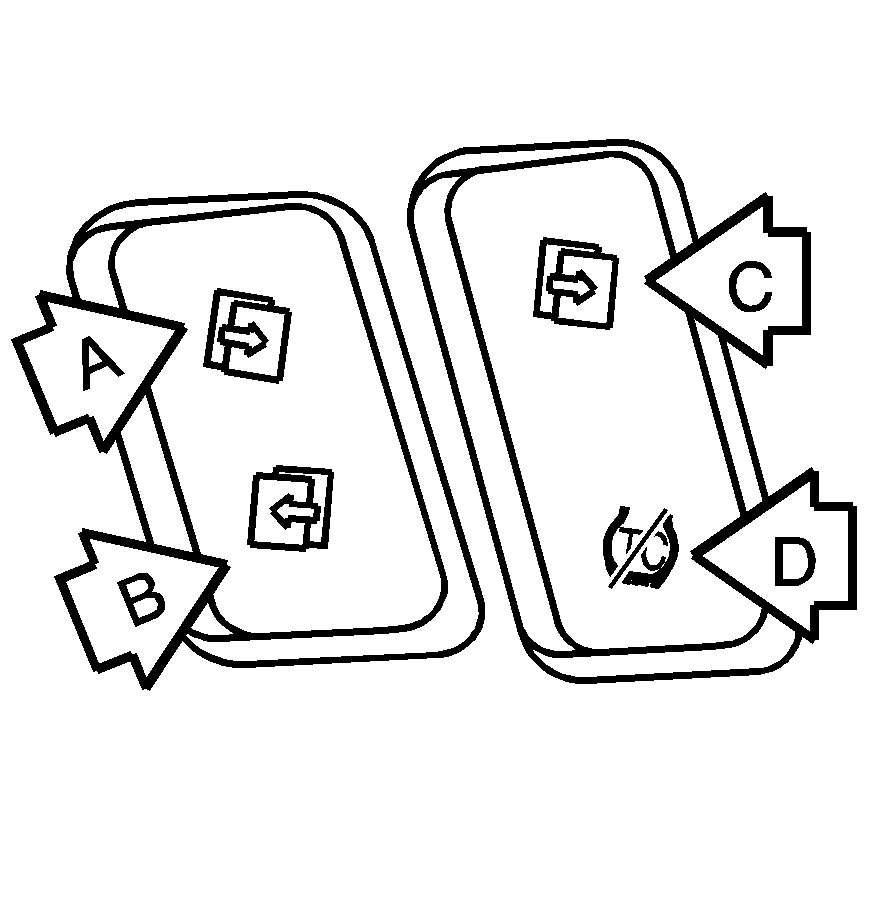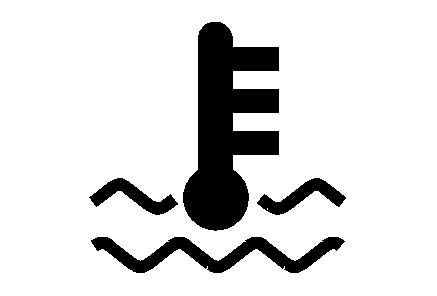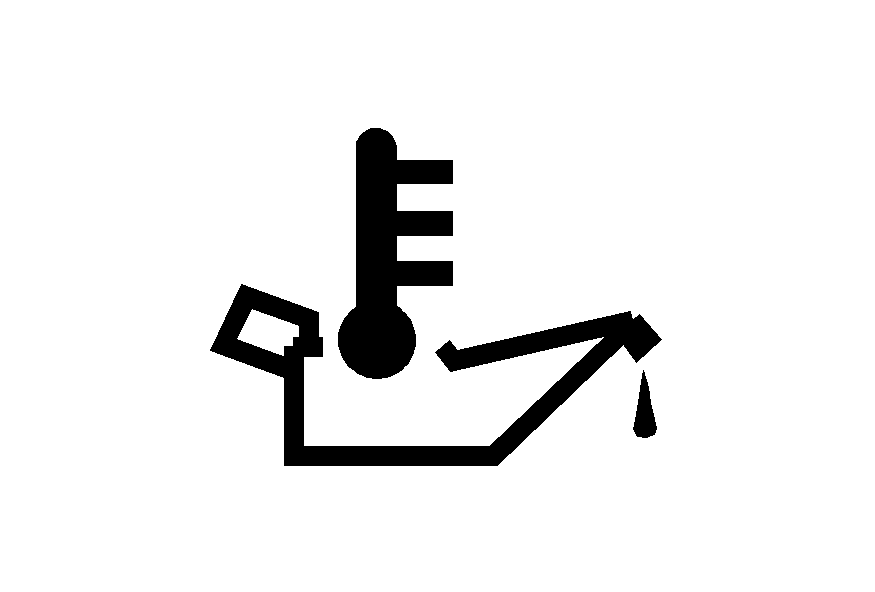Message Center CTS-V
Your vehicle may have a message center that can display information relating to powertrain fluids, tire pressures, vehicle dynamics, speedometer and odometer information, and transmission status. It also displays warning messages. There are two different areas where message center information will be displayed. One display is inside of the tachometer and the other is inside of the speedometer.

These are the controls for the message center. They are located on the left spoke of the steering wheel.
The outboard switch (A and B) controls the display of information inside of the tachometer. The upper button (C) on the inboard switch controls the display of information inside of the speedometer. The lower button (D) on the inboard switch turns the traction control on or off. See Traction Control System (TCS) for more information.
Speedometer Display
This display will show information relating to vehicle speed, odometer, and transmission status. The information displayed can be changed by pressing (C). Pressing this button cycles the displayed information as follows: digital speedometer only, odometer only, speedometer and odometer, or blank display.
When the transmission is shifted into REVERSE (R), an R will appear in the upper right corner.
During slow speed maneuvers, the engine's computer may command the transmission to engage the Skip Shift feature. For more information see Manual Transmission Operation .
Tachometer Display
Press (B) to cycle through the following displays: coolant temperature, oil pressure, oil temperature, transmission temperature, tire pressure, and lateral acceleration. Press (A) to cycle through the displays in reverse order. If you press (A), for about one second, the display will become blank.
Coolant Temperature

When the coolant temperature displays you will see the coolant temperature symbol.
The temperature displays in degrees Fahrenheit or Celsius with a graph beneath the reading. If the graph shows the temperature in the shaded area all the way on the right, then the coolant temperature is hot. See Engine Overheating for more information.
Oil Pressure

When the oil pressure displays you will see the oil pressure symbol.
The oil pressure displays in psi or kPa with a graph beneath the reading. If the graph shows the pressure in the shaded area all the way to the left, then the oil pressure is low. See Engine Oil and DIC Warnings and Messages for more information.
Oil Temperature

When the oil temperature displays you will see the oil temperature symbol.
The temperature displays in degrees Fahrenheit or Celsius with a graph beneath the reading. If the graph shows the temperature in the shaded area all the way on the right, then the oil temperature is hot. See Engine Oil for more information.
Transmission Temperature

When the transmission temperature displays you will see the transmission temperature symbol.
The temperature displays in degrees Fahrenheit or Celsius with a graph beneath the reading. If the graph shows the temperature in the shaded area all the way on the right, then the transmission temperature is hot. See DIC Warnings and Messages and Manual Transmission Fluid for more information.
Tire Pressure
When the tire pressure is displayed you will see a vehicle in the display. The numbers in each corner represent the tire pressure for the corresponding tire. The tire pressure will be displayed in psi or kPa.
If any of the tires are blinking on the vehicle in the display, this means that the tire pressure in that tire is either high or low. See Tire Pressure Monitor System for more information.
Lateral Acceleration
Lateral acceleration is a measure of how hard you are taking a corner. For example, when you are turning right you will feel your body push to the left. This force is measured in a "g". This gage will display from 0.00 g to 1.2 g. The lowest reading means there is no lateral acceleration. The highest reading means the force the driver is feeling is 1.2 times the acceleration due to gravity.
When (B) is pressed and held while the Lateral Acceleration display is being shown, the peak hold values--both tick marks and numbers--will be reset to zero.
Warning Messages
The warning messages that are described in the following text are also shown in the tachometer display.
While any warning messages are shown, pressing (A) or (B) will acknowledge the warning and then display the gage relating to the message. For instance, if a tire is below the minimum recommended pressure, the tire pressure warning message will blink on and off (five times for a low tire warning, continuously for a flat tire warning). The driver can go to the tire pressure display immediately by pressing either button on the outboard switch.
